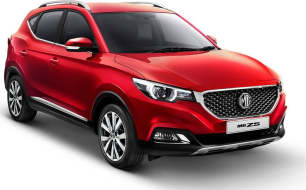While the cabin of the Qashqai isn't huge, there's room enough for four adults to be relatively comfortable on a longer trip, providing the adults in the rear seat aren't pushing too far above the six-foot mark.
Access is good for both rows because of the 175mm ground clearance and wide door apertures. There will be absolutely no grunts or groans getting in and out of this model.
Both rows offer comfortable seating with deep seat beds and thick padding. The front passenger seat isn't powered but still offers decent adjustment, including lumbar support, for even a choosy passenger to feel at ease. I particularly like the two-seat memory position on the drivers' side if you regularly share your vehicle with your other half.
Individual storage is about what you'd expect of a small SUV with the front row getting the best of it. The glove box holds more than a manual, the middle console features a separate shelf for smaller items and you get a dedicated phone cradle which also doubles as the wireless charging pad.
There are a total of eight drink holders (four in the front, four in the rear) in the car, a couple of map pockets in the rear and a boot capacity that's as large as it's non-hybrid siblings at 404 litres.
The boot space is practical with a wide and squarish shape, level loading space and powered tailgate. There is a raised cover over some hybrid stuff that sometimes gets in the way and a dicky-looking cargo cover but otherwise the boot is sufficient for the everyday stuff.
Great to see Nissan including a temporary spare wheel in the hybrid Qashqai, rather than the tyre repair kit that's found in many hybrids and electric cars.
Technology is on the simple side as it lacks the ability to customise much in both the multimedia system or digital instrument cluster but everything still feels logical and easy to use. Also the graphics are clear, so there are no complaints from this party.
The built-in satellite navigation pulls through directions to the coloured head-up display and the wireless Apple CarPlay was easy to connect to and maintained a strong connection this week. There is also wireless Android Auto for those users.
Charging options are solid with each row getting two USB-C ports, while the front also gets a wireless charging pad and 12-volt socket. Another 12-volt socket is found in the boot space.

